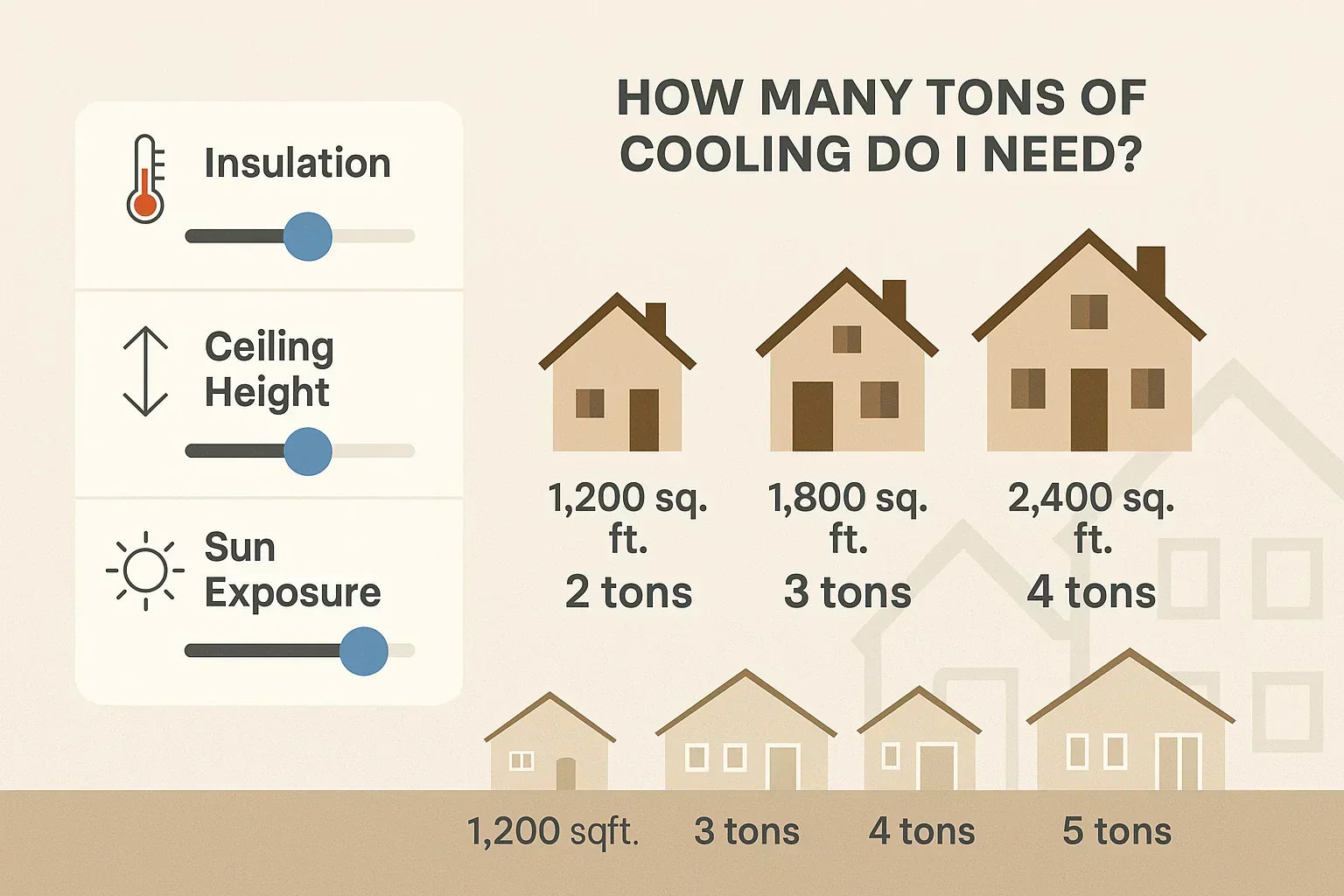By Alex Lane | Your Home Comfort Advocate
When it comes to central air conditioning, bigger isn’t always better — and smaller certainly isn’t smarter. The real key to comfort, efficiency, and long-term performance is choosing the right-sized system for your home.
Unfortunately, a lot of homeowners (and even some contractors) still rely on outdated rules of thumb like “1 ton per 500 square feet.” But sizing your central AC system properly takes more than just square footage. It’s a science — and getting it wrong can cost you in comfort, repairs, and energy bills.
Let’s break down what you need to know to get it right.
📘 Just comparing cooling options? Start here 👉 Central AC vs. Ductless Mini-Split: Which One Should You Choose?
Why AC Sizing Matters More Than You Think
An air conditioner that’s too big or too small can create more problems than it solves:
If it’s oversized…
-
Cools too quickly without removing humidity
-
Leads to short cycling → more wear, higher energy bills
-
Creates uneven temperature zones
If it’s undersized…
-
Runs constantly, especially on hot days
-
Struggles to cool your home effectively
-
Shortens the system’s lifespan
In both cases, you end up paying more — in utility bills, repairs, and early replacement.
What Does “Tonnage” Mean in AC Sizing?
Air conditioner capacity is measured in tons, which is a shorthand for how much heat the system can remove in an hour.
-
1 ton = 12,000 BTUs/hour
-
Typical residential units range from 1.5 to 5 tons
A rough estimate is 1 ton for every 600–1,000 square feet, but that doesn’t account for critical factors like ceiling height, insulation, or how much sun your home gets.
📘 Want to see the official breakdown? Check out the ENERGY STAR AC sizing guide for basic square footage-to-tonnage recommendations.
What Affects Cooling Load?
Your home’s cooling load is the total amount of heat it needs to remove to stay comfortable. Here are the biggest factors that influence the right AC size:
1. Square Footage
This is the baseline — but it’s just the starting point.
2. Insulation & Air Leaks
Well-insulated homes hold cool air better and require less capacity. Older homes or those with leaky ductwork and poor insulation need more.
3. Window Size, Type & Direction
Homes with lots of single-pane windows — especially west- or south-facing — gain more heat in the afternoon. This increases the cooling load.
4. Ceiling Height
A 2,000 sq ft home with 10-ft ceilings has more air volume to cool than one with 8-ft ceilings. Always consider the total cubic footage, not just floor space.
5. Occupancy and Internal Heat Gains
More people = more body heat. Appliances, lighting, and electronics also raise the cooling load.
📘 For a deeper dive into what impacts cooling demand, check out this explanation of Cooling Load Factors (CLF) — a key concept in HVAC design that shows how windows, orientation, and materials affect your AC sizing.
What Is a Manual J Load Calculation?
If you take one thing away from this post, let it be this: insist on a Manual J calculation before installing or replacing your AC system.
A Manual J calculation is the industry gold standard for HVAC sizing. It’s a detailed report that accounts for:
-
Square footage
-
Climate zone
-
Insulation levels
-
Window type and placement
-
Air infiltration
-
Internal heat gain
-
Duct layout and efficiency
-
Home orientation
It’s required by code in many areas and performed using software by trained HVAC professionals.
📘 Curious what goes into it? The ACCA’s official Manual J documentation outlines every step.
DIY Sizing vs. Professional Assessment
Online calculators are fine for getting a rough ballpark, but they miss critical nuances like shading, insulation quality, and ceiling height.
Why you need a pro:
-
They run Manual J software
-
They can assess ductwork sizing and layout
-
They’ll match your system to SEER2 minimums and local code requirements
-
They know how to size for both performance and energy savings
➡️ Use the AHRI Contractor Directory to find a licensed, NATE-certified pro in your area.
Common Sizing Mistakes to Avoid
Unfortunately, even well-meaning homeowners and contractors make these errors:
❌ Assuming Bigger = Better
Oversized units short-cycle, waste energy, and wear out faster.
❌ Replacing “Same for Same”
Don’t assume your last AC was properly sized. Your home may have been renovated or reinsulated since then.
❌ Ignoring Load Changes
New windows, attic insulation, or shade trees can lower your cooling load — which may reduce the tonnage you need.
❌ Guessing Based on Square Footage Alone
This method ignores climate zone, internal heat gain, and design.
Final Steps Before You Buy
Here’s a quick checklist to follow:
✅ Ask for a Manual J load calculation (get it in writing)
✅ Confirm ductwork size and layout match your system
✅ Choose a system that meets your region’s SEER2 minimums
✅ Get an AHRI Certificate and EnergyGuide label
✅ Hire a licensed, NATE-certified installer with experience in your brand
📘 For model comparisons, head to 👉 Top 10 Central AC Units Compared (2025 Edition)
Final Thoughts from Alex Lane
If you’re investing in a central AC system, the size is everything. A properly sized system will run smoother, last longer, and save you money month after month.
So skip the guesswork. Insist on a proper load calculation, work with a certified pro, and remember: the right-sized AC is the foundation of real comfort.
Alex Lane
Your Home Comfort Advocate







